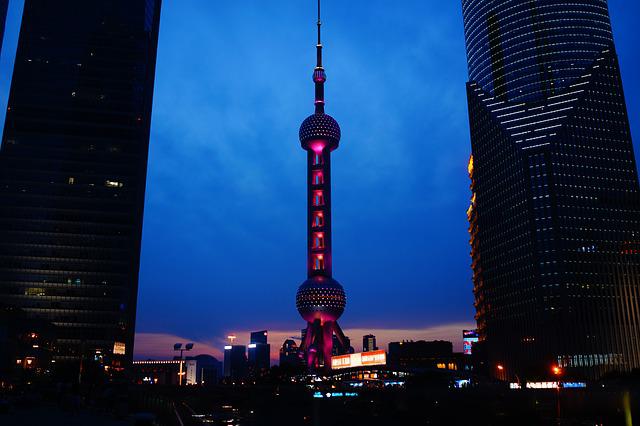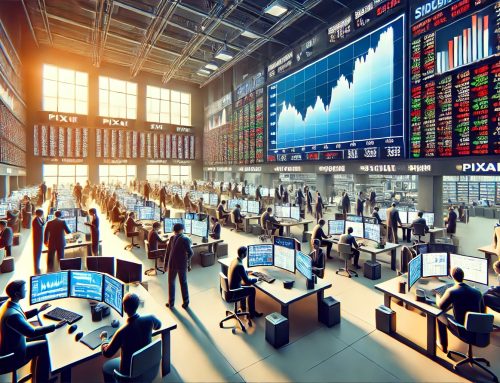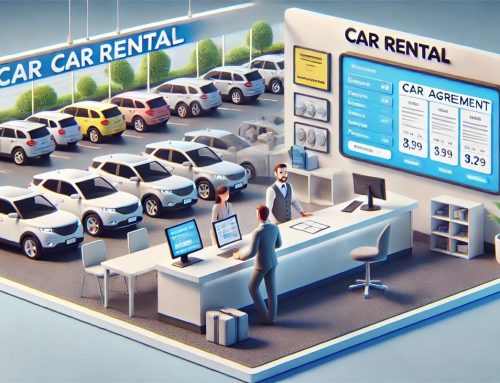August 17, 2022
In July, faced with increasingly complicated and challenging international environment as well as frequent and sporadic domestic outbreaks of Covid-19 pandemic, under the strong leadership of the Central Committee of the Communist Party of China (CPC) with Comrade Xi Jinping at its core, all regions and departments adhered to the general principle of pursuing progress while maintaining stability, conscientiously implemented the decisions and arrangements made by the CPC Central Committee and the State Council, effectively coordinated the Covid-19 prevention and control and the economic and social development, and carried out a package of policies and measures to stabilize the economy. As a result, production and supply continued to recover, employment and prices were generally stable, foreign trade maintained the good momentum of growth, and people’s livelihood was strongly and effectively safeguarded. The national economy sustained the momentum of recovery.
- Industrial Production Grew Steadily and Equipment Manufacturing as well as High-Tech Manufacturing Grew Fast.
In July, the total value added of the industrial enterprises above the designated size grew by 3.8 percent year on year, down by 0.1 percentage points over that of the previous month; the month-on-month growth was 0.38 percent. In terms of sectors, the value added of mining went up by 8.1 percent, manufacturing up by 2.7 percent and the production and supply of electricity, thermal power, gas and water up by 9.5 percent. The value added of equipment manufacturing and high-tech manufacturing went up by 8.4 percent and 5.9 percent year on year respectively, or 4.6 percentage points and 2.1 percentage points faster than that of the total value added of the industrial enterprises above the designated size. An analysis by types of ownership showed that the value added of state holding enterprises was up by 5.4 percent year on year; that of share-holding enterprises was up by 4.4 percent; that of enterprises funded by foreign investors or investors from Hong Kong, Macao and Taiwan was up by 1.9 percent; and that of private enterprises was up by 1.5 percent. In term of products, the production of green and smart products like new-energy vehicles and solar cells grew by 112.7 percent and 33.9 percent year on year respectively. In the first seven months, the total value added of the industrial enterprises above the designated size went up by 3.5 percent year on year, 0.1 percentage points faster than that of the first six months. In July, the Manufacturing Purchasing Managers’ Index stood at 49.0 percent; the Production and Operation Expectation Index was 52.0 percent. In the first six months, the total profits made by industrial enterprises above the designated size stood at 4,270.2 billion yuan, up by 1.0 percent year on year.
- Service Sector Continued to Recoverand Modern Service Industries Witnessed Good Momentum of Growth.
In July, the Index of Services Production grew by 0.6 percent year on year, 0.7 percentage points lower than that of the previous month. Specifically, that of information transmission, software and information technology services and that of financial intermediation grew by 10.3 percent and 4.9 percent respectively. In the first seven months, the Index of Services Production dropped by 0.3 percent year on year, 0.1 percentage points slower than that of the first six months. In the first six months, the business revenue of service enterprises above the designated size went up by 4.4 percent year on year. Specifically, that of enterprises in information transmission, software and information technology services, health and social services and scientific research and technical service grew by 8.3 percent, 7.2 percent and 6.8 percent respectively. In July, the Business Activity Index for Services was 52.8 percent. Specifically, the Business Activity Index for railway transportation, air transportation, accommodation, catering, telecommunication, broadcast, television and satellite transmission services, ecological conservation and public facilities management as well as culture, sports and entertainment stayed within the high expansion range of 55.0 percent and above. From the perspective of market expectation, the Business Activity Expectation Index for Services was 58.8 percent.
- Market Sales Continued to Grow and the Sale of Upgraded Goods Were Buoyant.
In July, the total retail sales of consumer goods reached 3,587.0 billion yuan, up by 2.7 percent year on year, 0.4 percentage points lower than that in the previous month, or a month-on-month increase of 0.27 percent. Analyzed by different areas, the retail sales of consumer goods in urban areas reached 3,120.5 billion yuan, up by 2.7 percent year on year; and that in rural areas reached 466.5 billion yuan, up by 2.6 percent. Grouped by types of consumption, the retail sales of goods was 3,217.6 billion yuan, up by 3.2 percent; the income of catering was 369.4 billion yuan, down by 1.5 percent. The consumption for basic living grew steadily. The retail sales of grain, oil and food and that of beverage by enterprises above the designated size went up by 6.2 percent and 3.0 percent respectively. The sales of upgraded goods increased fast. The retail sales of gold, silver and jewelry, culture and office appliances, household appliances and audio-video equipment by enterprises above the designated size went up by 22.1 percent, 11.5 percent and 7.1 percent respectively. In the first seven months, the total retail sales of consumer goods was 24,630.2 billion yuan, down by 0.2 percent year on year, or 0.5 percentage points slower than that of the first six months. The online retail sales totaled 7,322.4 billion yuan, up by 3.2 percent. Specifically, the online retail sales of physical goods were 6,315.3 billion yuan, up by 5.7 percent, accounting for 25.6 percent of the total retail sales of consumer good.
- Investment in Fixed Assets Scaled up and Investment in High-Tech Industries Grew Fast.
In the first seven months, the investment in fixed assets (excluding rural households) reached 31,981.2 billion yuan, up by 5.7 percent year on year, 0.4 percentage points lower than that of the first six months; the month-on-month growth in July was 0.16 percent. Specifically, the investment in infrastructure grew by 7.4 percent year on year, that in manufacturing grew by 9.9 percent, and that in real estate development declined by 6.4 percent. The floor space of commercial buildings sold was 781.78 million square meters, down by 23.1 percent year on year; the total sales of commercial buildings were 7,576.3 billion yuan, down by 28.8 percent. By industry, the investment in the primary industry went up by 2.4 percent year on year, that in the secondary industry up by 10.4 percent, and that in the tertiary industry up by 3.7 percent. The private investment went up by 2.7 percent. The investment in high-tech industries grew by 20.2 percent, of which the investment in high-tech manufacturing and high-tech services grew by 22.9 percent and 14.3 percent respectively. In terms of high-tech manufacturing, the investment in manufacturing of electronic and communication equipment and in manufacturing of medical equipment, measuring instrument and meter grew by 27.5 percent and 26.6 percent respectively. In terms of high-tech services, the investment in services for transformation of scientific and technological achievements and in research, development and design services went up by 16.2 percent and 15.5 percent respectively. The investment in social sectors grew by 14.5 percent. Specifically, the investment in health sector and education sector grew by 33.0 percent and 8.2 percent respectively.
- Imports and Exports of Goods Grew Fastand Trade Structure Continued to Improve.
In July, the total value of imports and exports of goods was 3,806.4 billion yuan, up by 16.6 percent year on year, 2.3 percentage points faster than the previous month. Specifically, the value of exports was 2,244.6 billion yuan, up by 23.9 percent; and the value of imports was 1,561.9 billion yuan, up by 7.4 percent. The trade balance was 682.7 billion yuan in surplus. In the first seven months, the total value of imports and exports of goods was 23,604.1 billion yuan, up by 10.4 percent year on year. Specifically, the value of exports was 13,369.8 billion yuan, up by 14.7 percent; the value of imports was 10,234.4 billion yuan, up by 5.3 percent. In the first seven months, the imports and exports of general trade accounted for 64.3 percent of the total value of imports and exports, 2.3 percentage points higher than that in the same period of the previous year. The imports and exports by private enterprises accounted for 50 percent of the total value of imports and exports, 2.1 percentage points higher than the same period of the previous year. The exports of mechanical and electrical products grew by 10.1 percent year on year, accounting for 56.6 percent of the total exports.
- Employment was Generally Stable andUrbanSurveyed Unemployment Rate Continued to Drop.
In the first seven months, the newly increased employed people in urban areas totaled 7.83 million. In July, the urban surveyed unemployment rate was 5.4 percent, 0.1 percentage points lower than the previous month. The surveyed unemployment rate of population with local household registration was 5.3 percent and that of population with non-local household registration was 5.5 percent, among which, the rate of the population with non-local agricultural household registration was 5.1 percent. Specifically, the surveyed unemployment rates of the population aged from 16 to 24 and from 25 to 59 were 19.9 percent and 4.3 percent respectively. The urban surveyed unemployment rate in 31 major cities was 5.6 percent. The employees of enterprises worked 48.0 hours per week on average.
- Growth of Consumer Price Increased Slightly and Growth of Producer Prices for Industrial Products Continued to Slow Down.
In July, the consumer price index (CPI) went up by 2.7 percent year on year, 0.2 percentage points higher than the previous month, or up by 0.5 percent month on month. Grouped by commodity categories, prices for food, tobacco and alcohol went up by 4.7 percent year on year; clothing up by 0.7 percent; housing up by 0.7 percent; articles and services for daily use up by 1.4 percent; transportation and communication up by 6.1 percent; education, culture and recreation up by 1.5 percent; medical services and health care up by 0.7 percent; and other articles and services up by 0.9 percent. In terms of food, tobacco and alcohol prices, prices for grain went up by 3.4 percent, fresh vegetables up by 12.9 percent, fresh fruits up by 16.9 percent and pork went up by 20.2 percent. The core CPI excluding the prices of food and energy went up by 0.8 percent year on year, 0.2 percentage points lower than the previous month. In the first seven months, the CPI went up by 1.8 percent year on year.
In July, the producer prices for industrial products grew by 4.2 percent year on year, 1.9 percentage points lower than the previous month, or down by 1.3 percent month on month. The purchasing prices for industrial producers went up by 6.5 percent year on year, or down by 0.9 percent month on month. In the first seven months, the producer prices for industrial products and the purchasing prices for industrial producers went up by 7.2 percent and 9.8 percent year on year respectively.
Generally speaking, in July, policies adopted to effectively coordinate the Covid-19 prevention and control and the economic and social development continued to yield positive results, and the national economy maintained the momentum of recovery. However, we must be aware that the stagflation risks of the world economy are increasing and the foundation for the recovery of domestic economy is yet to be consolidated. At the next stage, we must follow the guidance of Xi Jinping Thought on Socialism with Chinese Characteristics for a New Era and stick to the general principle of pursuing progress while maintaining stability. Following the requirements of containing the epidemic, stabilizing the economy and keeping development secure, we should effectively coordinate Covid-19 response with economic and social development, and take advantage of the critical period of economic recovery to expand domestic demands and stabilize employment and prices, so as to effectively ensure and improve people’s livelihood, consolidate the foundation for economic recovery and keep major economic indicators within an appropriate range.
Source: National Bureau of Statistics of China
Legal Notice: The information in this article is intended for information purposes only. It is not intended for professional information purposes specific to a person or an institution. Every institution has different requirements because of its own circumstances even though they bear a resemblance to each other. Consequently, it is your interest to consult on an expert before taking a decision based on information stated in this article and putting into practice. Neither Karen Audit nor related person or institutions are not responsible for any damages or losses that might occur in consequence of the use of the information in this article by private or formal, real or legal person and institutions.






